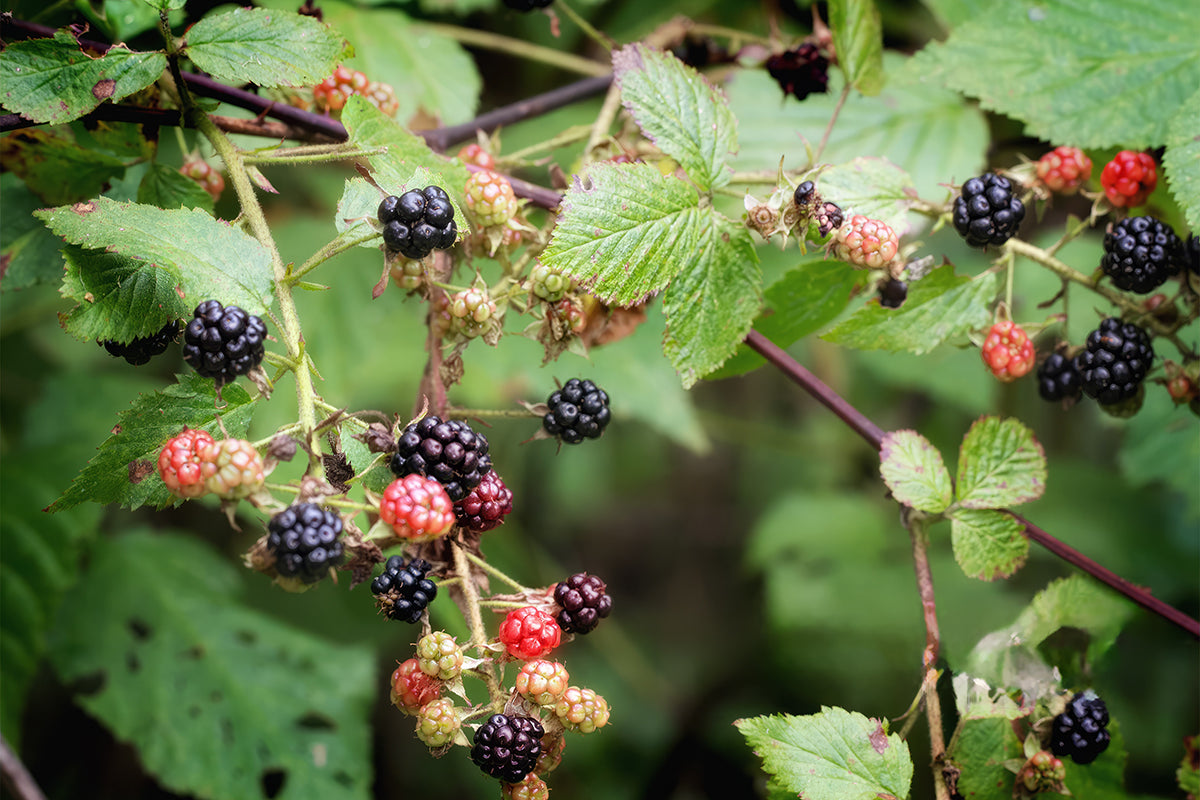Plant folklore - blackberries

Brambles, or blackberries, call them what you will, are steeped in fascinating folklore. One common tale warns against eating the fruit after Michaelmas Day, the feast of Saint Michael that falls on September 29th. Legend has it that when Saint Michael cast Lucifer from heaven, he landed in a bramble thicket. Enraged, Lucifer cursed and spat on the brambles. While this tale seems fantastical, it's rooted in a degree of practical country wisdom. By late September, bramble berries often become flyblown and begin to rot. They can become mouldy and take on an unpleasantly bitter taste due to an increased level of tannins.
Greek mythology offers a similar tale. Bellerophon,the son of Poseidon, riding Pegasus to Mount Olympus, angered the gods. Zeus sent a gadfly to sting Pegasus, causing Bellerophon to fall into a bramble bush, blinding him and condemning him to a life of misery.
In Scottish lore, it's the mischievous bogle, who taints the berries. This sprite, somewhat like the English puck, is said to spit or urinate on the fruit to deter humans from eating it. There’s one tale that recounts a young baron catching a bogle red-handed with bramble-stained fingers, leading to the creature's punishment and subsequent revenge on the brambles.
Where brambles' long stems loop over and root themselves they form a natural arch – these arches have been used for years in folk practices and ceremonies and were said to treat many ails. The patient would be passed through the arch symbolising a new beginning with the hope the ailment would be cured. In Herefordshire they took this to further lengths where the Lord's Prayer was recited whilst the patient, who would be eating bread and butter, would be passed through the arch nine times. Sometimes they would add the rhyme "Under the briar and over the briar, I wish to leave the chincough here". The remains of the bread and butter would be given to a passing animal or bird as the patient returned home. If the food was consumed then the cough would disappear. The very same cure was said to work on cows and horses too.
Wild brambles were once dubbed ‘lawyers’ - a nickname stemming from the difficulty one faces when trying to escape their thorny embrace. In a Norfolk wood, a particularly aggressive variety has been christened Rubus boadicea, a nod to the fierce spirit of the ancient British queen.
Not everyone viewed these prickly plants with disdain. Victorian gentlemen in a romantic mood found these thorny bushes provided the perfect excuse for gallant assistance to ladies in long skirts, offering a socially acceptable excuse for closer interaction. This opportunity for romance and dalliance didn’t go unnoticed by the Pre-Raphaelite poet Thomas Woolner. His verses in ‘My Beautiful Lady’ transform thorny brambles from obstacles into opportunities for romance.
We thread a copse where frequent bramble spray
With loose obtrusion from the side roots stray,
And force sweet pauses on our walk.
Or maybe that some thorn or prickly stem
Will take prisoner her long garment's hem:
To disentangle it I kneel, Oft wounding more than I can heal,
It makes her laugh, my zeal.
Next time brambles are encountered on a country ramble, perhaps we’ll all see them not just as a source of berries for our Sunday crumble, but as a matchmaker, with tales of adventure and romance.







